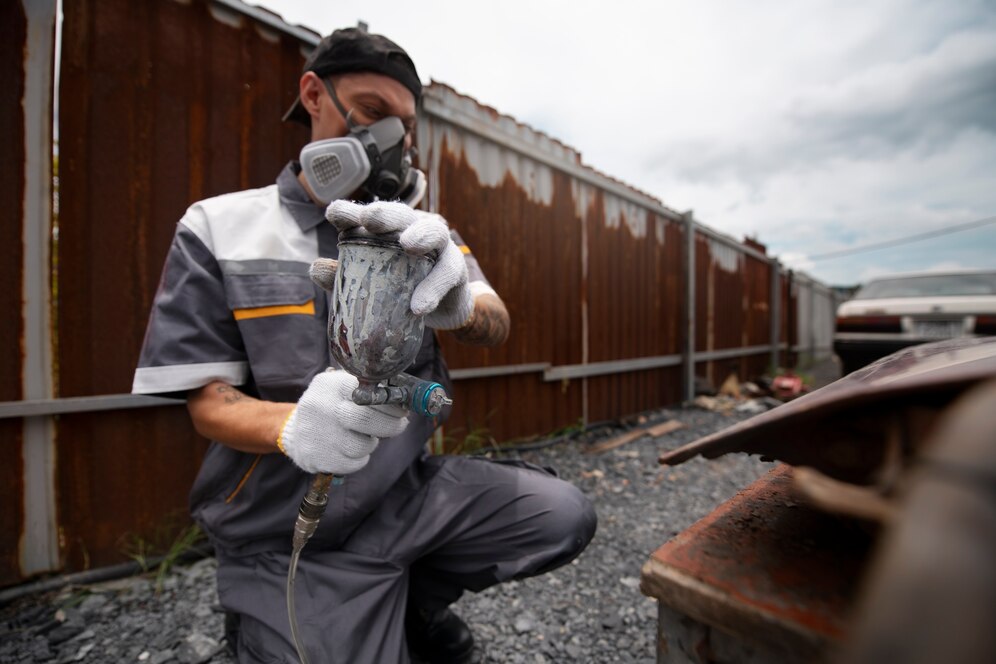
Corrosion of steel bars is a critical concern in reinforced concrete elements, potentially undermining their serviceability and leading to structural failure. To combat this issue, a variety of measures can be implemented during construction to prevent reinforcement corrosion. High-quality, low-permeability concrete is essential for controlling various corrosion mechanisms.
By focusing on aspects such as workmanship, concrete mixtures, and curing, it is possible to produce low-permeability concrete with excellent quality.
This article outlines the best practices for preventing reinforcement corrosion on construction sites, providing essential guidelines for designers and site engineers.
1. Water-Cement Ratio (w/c ratio)
Achieving low-permeability concrete is crucial for protecting reinforcement. A low w/c ratio helps produce concrete that offers better reinforcement protection. According to the ACI 318M-11 Building Code, a maximum w/c ratio of 0.40 and a minimum concrete strength of 35 MPa are recommended for concrete exposed to moisture and external sources of chlorides, such as deicing chemicals, salt, brackish water, seawater, or spray from these sources.
2. Cement Content
Increasing cement content enhances the binding capacity of CO2 and chloride ions. However, the water/cement ratio, curing, and compaction quality have a more significant impact on chloride and carbonation penetration than cement content alone. The ACI 357R-84 recommends a minimum cement content of 356 Kg/m3 for concrete in corrosive environments.
3. Cement Type
Cement composition greatly influences concrete durability. For example, higher tricalcium aluminate (C3A) content in Portland cement significantly improves corrosion resistance. This is because chloride ions react with hydrated tricalcium sulfoaluminate to form insoluble Friedel’s salt in the hardened cement paste. However, the effectiveness of C3A decreases as chloride content increases, and higher C3A content can reduce resistance to sulfate attack. The ACI 357R-84 recommends using ASTM I, II, and III (Canadian Standard Association (CSA) 10, 20, and 30) cement types with C3A content between 4-10%.
4. Pozzolans
Pozzolanic materials like silica fume, blast-furnace slag, and fly ash are used to produce concrete resistant to chloride and sulfate attacks. The combination of water, calcium hydroxide, and pozzolans results in low-permeability and high-strength concrete. ACI 318M-11 permits type V (50 according to CSA) cement with pozzolans to resist sulfate attacks.
5. Admixtures
Admixtures are chemical materials that enhance the protection of steel reinforcement from corrosion. Water-reducing admixtures and superplasticizers help achieve a low w/c ratio while maintaining workability, leading to better impermeability. Admixtures containing calcium chloride should be avoided as they promote steel corrosion. Time-setting modification and water-reducing admixtures should be used according to ASTM C494M.
6. Aggregates
Aggregates significantly affect concrete permeability, occupying around 70% of the concrete mix volume. Larger coarse aggregates increase concrete permeability. Since the permeability of most mineral aggregates is 10-1000 times higher than that of concrete paste, it is crucial to include aggregate moisture content in w/c ratio calculations and ensure they are washed.
7. Concrete Cover Thickness
The depth of concrete cover is a major factor affecting reinforcement corrosion. Increased concrete cover delays moisture penetration and chloride ingress. Several parameters influence concrete cover thickness and, consequently, reinforcement corrosion. The following equation illustrates these parameters:
Where:
- Rt is the time to corrosion of reinforcements embedded in concrete exposed to saline water continuously (years).
- Si is the depth of concrete cover (cm).
- K is the chloride ion concentration (ppm).
- w/c is the water to cement ratio.
ACI 318M-11 recommends a minimum concrete cover of 65 mm for conventional concrete and 50 mm for precast concrete for corrosion protection.
8. Compaction
Adequate concrete compaction is crucial to prevent reinforcement corrosion. Poor compaction during concrete pouring accelerates corrosion. For example, a 10% decrease in compaction can increase permeability by 100% and reduce concrete strength by 50%. Thus, ensuring proper compaction is vital to preventing corrosion.
9. Curing
Proper curing and control of temperature and moisture reduce concrete permeability. Inadequate curing can increase the permeability of the concrete surface layer by 5-10 times. If the curing period is too short, chloride ions can ingress before a passive protective film forms. The ACI committee 308 (Standard Practice of Curing) provides recommendations on concrete curing.
10. Permissible Crack Width
Concrete cracks significantly impact reinforcement corrosion. ACI 224-01 recommends a maximum crack width of 0.15 mm on the tension side of elements exposed to wetting and drying. Longitudinal cracks along steel reinforcement are more detrimental than transverse cracks because they expose a larger area to ingression, potentially causing spalling of the concrete cover.
11. Protective Coatings
Applying reinforcement bar coatings and cathodic protection are effective but more expensive methods to prevent corrosion. Anodic and barrier coatings are significant protective methods. In cathodic protection, the concrete environment is altered by employing sacrificial anodes or directing ion flow away from the reinforcement.
By following these best practices, construction sites can significantly reduce the risk of reinforcement corrosion, ensuring the longevity and durability of reinforced concrete structures.